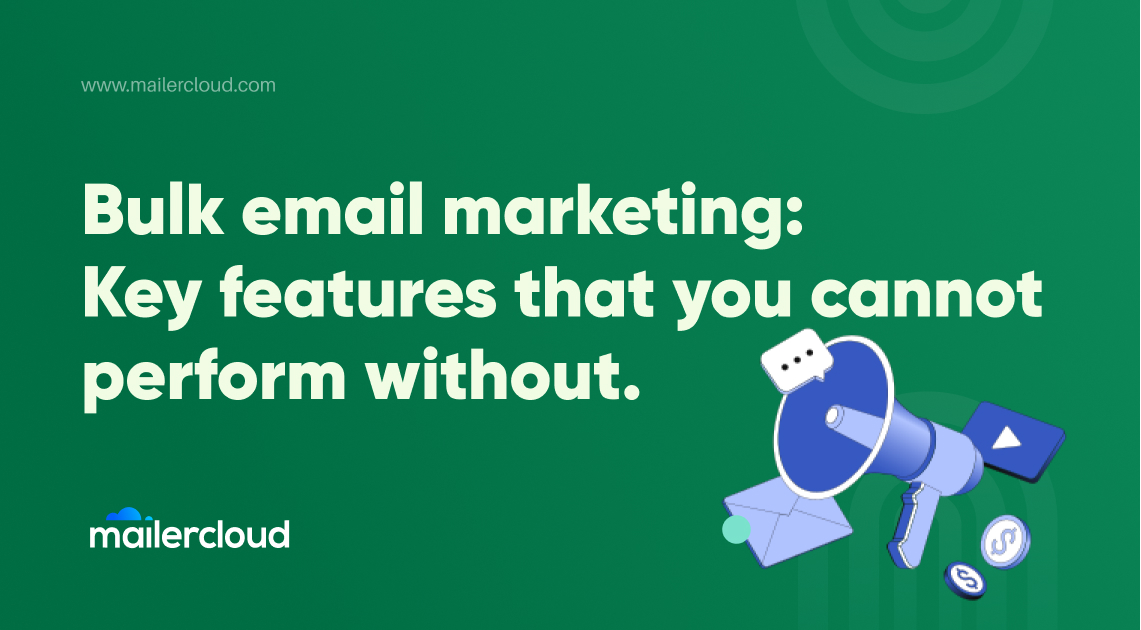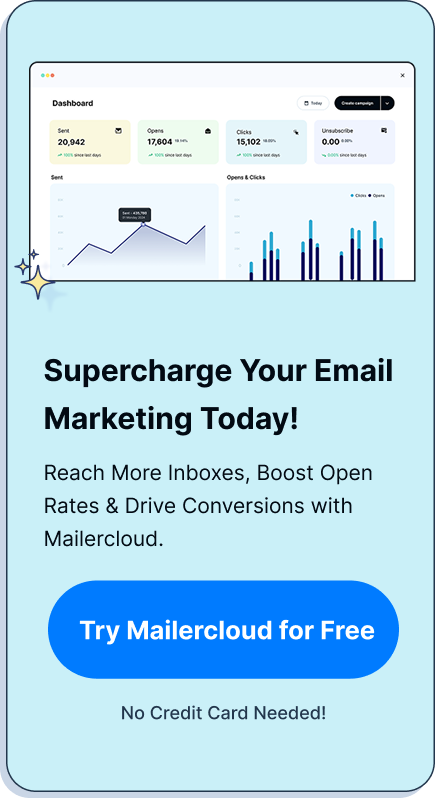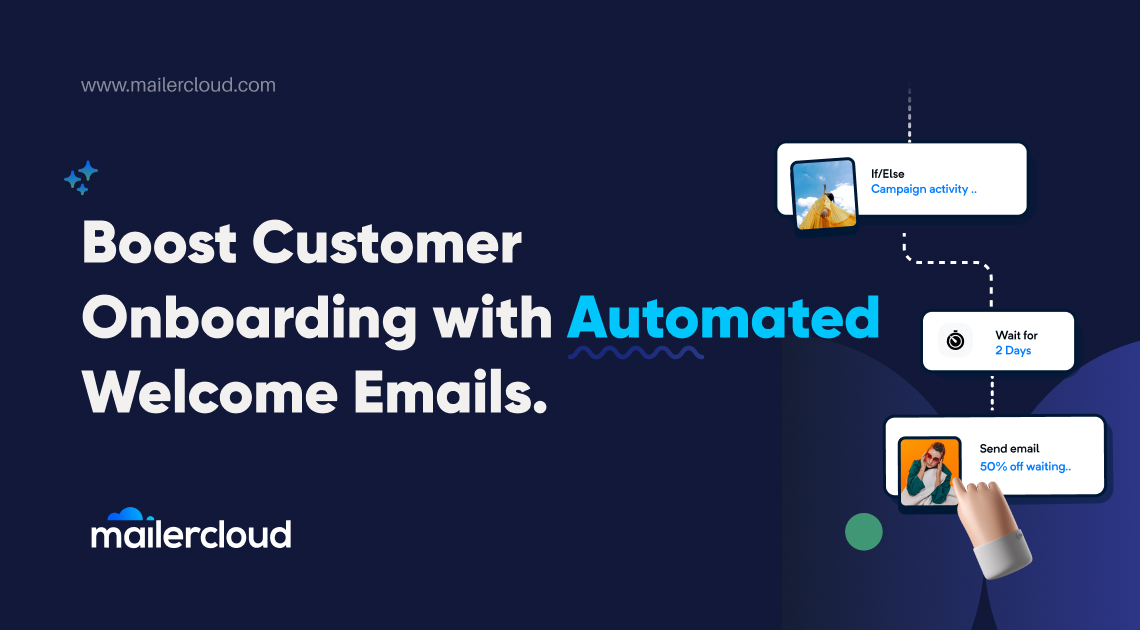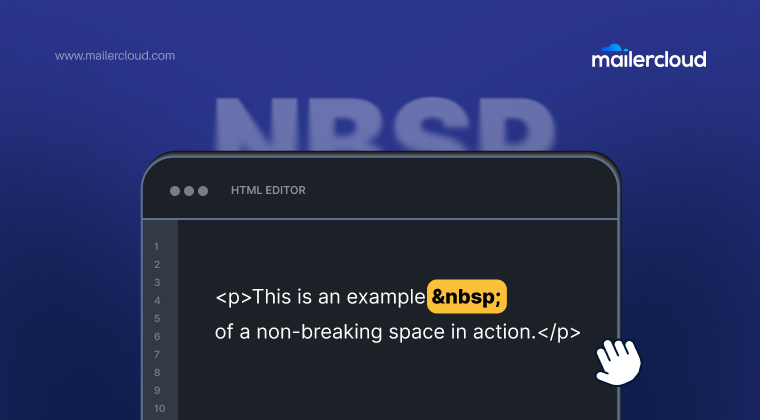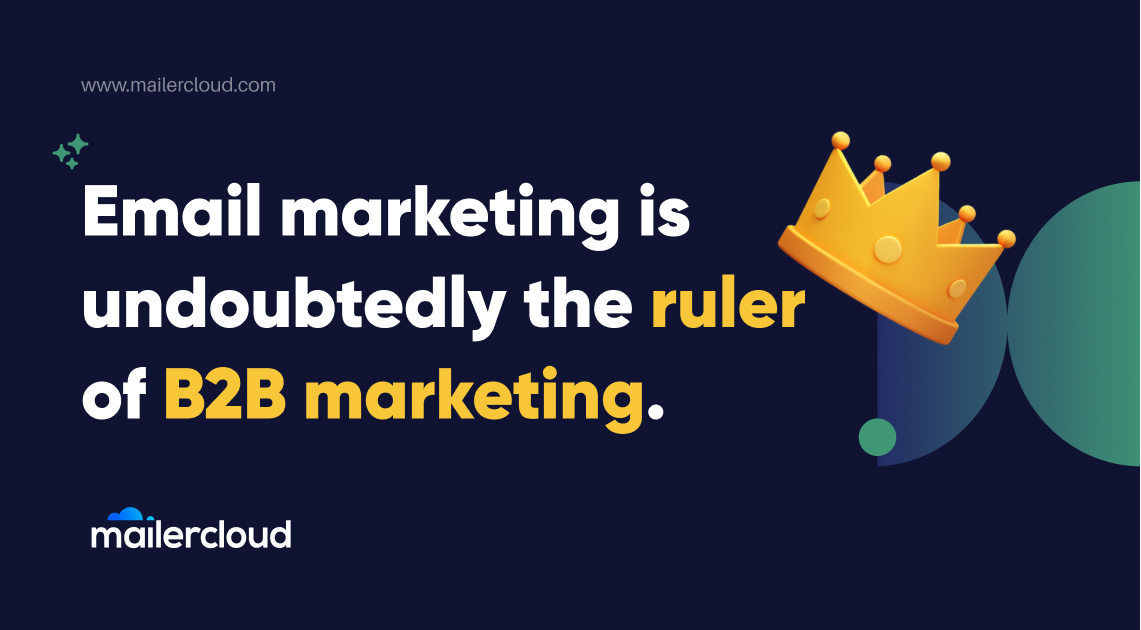Email marketing remains one of the most powerful tools for businesses, offering high ROI and direct customer engagement. Here’s why it still dominates:
- 87% of marketers use email marketing for content promotion.
- 760% increase in ROI through email list segmentation.
- 74% of marketers say email personalization enhances engagement.
- Strategic personalization leads to 50% higher open rates.
Whether you’re a startup or an enterprise, choosing the right mass email sender is key to ensuring your messages land in inboxes, not spam folders. In this guide, we’ve compared the top free tools that let you send emails at scale with high deliverability, automation, and personalization—without needing a CRM or technical setup.
Table of Contents
What is a Bulk Email Marketing Service?
A bulk email service (also called a mass email sender) lets businesses send large volumes of emails to targeted lists. These platforms enhance deliverability, enable automation, and provide detailed analytics for campaign optimization.
Must-Have Features:
- Segmentation & tagging
- Free plan availability
- Drag-and-drop email builders
- Email tracking & analytics
- Automation workflows
A Quick Look at the Best Free Email Marketing Platforms
| Bulk Email Sender | Best For | Standout Feature | Free Plan |
|---|---|---|---|
| Mailercloud | High deliverability & automation | AMP support & segmentation | 1,000 subscribers & 12,000 emails/mo |
| Sender | Affordable bulk emailing | Workflows & segmentation | 2,500 subscribers & 15,000 emails/mo |
| Brevo | Transactional emails & SMS | CRM & SMS marketing | 300 emails/day |
| Mailchimp | Beginners | A/B Testing & Templates | 500 contacts & 1,000 emails/mo |
| SendGrid | Developers | Email API & validation | 100 emails/day |
| Constant Contact | Events & SMBs | Event tools | 60-day free trial |
| GetResponse | AI-based automation | AI email optimization | 500 contacts |
| Campaign Monitor | Reporting & templates | Behavioral targeting | Trial only |
| AWeber | Newsletters & SMBs | Responsive templates | 500 subscribers & 3,000 emails/mo |
| Moosend | Budget users | Unlimited emails on paid plans | 250 subscribers |
Top 10 Free Bulk Email Services for 2025
1. Mailercloud – The Best Bulk Email Sender for Businesses
Mailercloud is a powerful and user-friendly bulk email sender or mass email sender designed for businesses of all sizes. It provides a drag-and-drop email builder, advanced automation, and segmentation tools to create and send personalized email campaigns with ease.
Mailercloud Pros:
- Easy-to-use drag-and-drop builder – No coding required for email creation
- Advanced automation – Set up workflows for lead nurturing and customer engagement
- AMP emails – Create interactive emails to boost engagement
- High deliverability rates – Ensures emails land in the inbox instead of spam
- Audience segmentation & contact tagging – Enables targeted marketing campaigns
- Affordable pricing – Includes a free plan suitable for startups and small businesses
Mailercloud Cons:
- Free plan has limited number automation – Advanced automation features require an upgrade
- AMP email feature is not available for free users – Only accessible in paid plans
Mailercloud offers automation workflows to streamline campaigns, making it easy to map out sequences for welcome emails, abandoned cart recovery, or drip campaigns. Users can also segment audiences based on behavior and track engagement in real time to refine their email marketing strategy.
In addition, Mailercloud integrates with third-party platforms to connect with CRM tools, eCommerce platforms, and productivity apps. This makes it easy to automate subscriber management and campaign execution across different marketing channels.
Mailercloud Pricing:
Free for up to 1,000 subscribers and 12,000 emails per month. Paid plans unlock advanced features like additional automation steps and increased sending limits.

2. Sender
Sender is a cost-effective bulk email sender that allows businesses to send mass emails for free while maintaining high deliverability rates.
The platform comes with a drag-and-drop email builder, making it easy to design professional emails. Sender also offers pre-built automation workflows, allowing businesses to set up email sequences for different customer interactions.
Additionally, Sender integrates with popular eCommerce platforms like Shopify and WooCommerce, helping online businesses automate their marketing. It also supports popups and lead generation tools to grow email lists quickly.
Sender Pros:
- Drag-and-drop email editor – Simple and intuitive design
- Automation workflows – Pre-built sequences for lead nurturing
- Advanced segmentation – Personalized email marketing
- High-converting popups – Helps grow your email list faster
- eCommerce & CRM integrations – Works with Shopify, WooCommerce, and more
Sender Cons:
- Limited email template designs in the free plan
- Fewer advanced automation options compared to premium platforms
Pricing:
Free for up to 2,500 subscribers and 15,000 emails per month. Paid plans offer advanced automation and customization options.cribers and 15,000 emails per month. Paid plans offer more automation and customization features.
3. Brevo (formerly Sendinblue)
Brevo is an all-in-one bulk email sender that provides both marketing and transactional email solutions. It also offers SMS marketing, making it a great option for businesses that need multi-channel communication.
Its email automation tools allow users to send behavior-based emails, while its CRM integration ensures smooth customer interactions. Transactional email support makes it ideal for businesses sending order confirmations, account updates, and real-time notifications.
Brevo Pros:
- Email & SMS marketing – Send bulk emails and texts
- Pre-built automation workflows – Set up behavior-based triggers
- CRM integration – Store and manage customer data
- High deliverability – Ensures emails reach inboxes
Brevo Cons:
- Daily sending limits on the free plan
- Some advanced analytics require a premium plan
Pricing:
Free for 300 emails per day. Paid plans start at $25/month.
4. Mailchimp
Mailchimp is one of the most recognized email marketing platforms, offering a beginner-friendly interface and powerful automation tools.
With its drag-and-drop editor, users can create engaging emails without technical expertise. It also provides A/B testing to optimize campaigns and audience segmentation for better targeting. You must always remember to send test emails before you publish your campaign.
Mailchimp integrates with various eCommerce and CRM platforms, making it a good choice for small businesses looking to grow their email marketing strategy.
Mailchimp Pros:
- User-friendly email editor – Simple drag-and-drop functionality
- Pre-built automation – Set up automated email sequences
- Audience segmentation – Deliver targeted content
- A/B testing – Optimize campaigns for better engagement
Mailchimp Cons:
- Limited automation features in the free plan
- Pricing increases as subscriber count grows
Pricing:
Free for 500 contacts and 1,000 emails per month. Paid plans start at $13/month.
5. SendGrid
SendGrid is a developer-friendly email platform that offers high-volume bulk email sending with robust API integrations.
It provides both transactional and marketing email services, making it a great choice for businesses that need custom email workflows. The platform also includes email validation and detailed analytics, helping users monitor performance and improve deliverability.
SendGrid Pros:
- API-first approach – Seamless integration for developers
- Transactional & marketing emails – Ideal for automated messaging
- Advanced analytics – Real-time tracking and insights
SendGrid Cons:
- Requires technical setup for API use
- Advanced features require a premium plan
Pricing:
Free for 100 emails per day. Paid plans start at $15/month.
6. Constant Contact
CConstant Contact is a popular bulk email sender designed for small businesses, non-profits, and event organizers.
It offers customizable templates, event management tools, and social media integrations to help businesses grow their online presence.
Constant Contact Pros:
- Customizable email templates – Professional designs
- Event management tools – Ideal for webinars & product launches
- List segmentation & automation – Target audiences effectively
Constant Contact Cons:
- No free plan available
- Limited advanced automation compared to competitors
Pricing:
Starts at $12/month, with a 30-day free trial available.
7. GetResponse
GetResponse is an all-in-one email marketing platform that integrates AI-driven automation, webinars, and landing pages into a single solution. This makes it an excellent choice for businesses that need more than just email marketing.
One of GetResponse’s standout features is its AI-powered email optimization, which helps users improve open and click rates by analyzing recipient behavior. Additionally, it offers automated email sequences, making it easy to set up drip campaigns and lead nurturing workflows.
Another key feature is its webinar hosting, allowing businesses to engage their audience through live or automated webinars. This makes it a valuable tool for educators, SaaS businesses, and service providers looking to convert leads into customers through interactive content.
GetResponse Pros:
- AI-powered email optimization – Increases engagement and open rates
- Automated email sequences – Supports drip campaigns and lead nurturing
- Webinar hosting – Allows users to host live and automated webinars
- Landing page builder – Create high-converting pages alongside email marketing
GetResponse Cons:
- Limited free plan features – Only basic tools are available for free users
- Advanced segmentation requires higher-tier plans – More customization comes at an extra cost
Pricing:
No free plan available. Paid plans start at $9/month.
8. Campaign Monitor
CCampaign Monitor is a reliable bulk email sender known for its customizable email templates and advanced reporting features.
Its drag-and-drop email designer makes it easy for businesses to create beautifully branded emails without any design experience. Additionally, behavioral targeting allows businesses to send highly personalized emails based on recipient actions, leading to higher engagement rates.
Campaign Monitor also excels in detailed reports and analytics, providing insights into open rates, click-through rates, and audience behavior. This makes it a great option for businesses looking to optimize their email marketing campaigns through data-driven decisions.
Campaign Monitor Pros:
- Drag-and-drop email designer – Fully customizable templates
- Behavioral targeting – Personalize emails based on user actions
- Detailed reports & analytics – Track campaign performance for better optimization
- Transactional email support – Ideal for eCommerce businesses
Campaign Monitor Cons:
- No free plan available – Users must opt for a paid plan
- Pricing is based on the number of emails sent – Can become expensive for high-volume senders
Pricing:
Starts at $9/month, with a free trial available.
9. AWeber
AWeber is a simple yet powerful bulk email sender, making it a great option for small businesses and entrepreneurs.
The platform provides responsive email templates, ensuring that emails look great on any device. Additionally, AWeber includes list management and segmentation tools, making it easy to organize subscribers and send targeted emails based on their behavior.
A/B testing is another useful feature, allowing businesses to test subject lines, email content, and send times to optimize engagement rates.
AWeber Pros:
- Responsive email templates – Mobile-friendly and professionally designed
- List management & segmentation – Helps organize and engage subscribers
- A/B testing – Improve campaign effectiveness with split testing
- Landing page builder – Helps capture leads and grow email lists
AWeber Cons:
- Fewer automation features in the free plan – Advanced automation requires an upgrade
- Lacks built-in SMS marketing – Focuses primarily on email campaigns
Pricing:
Free for 500 subscribers and 3,000 emails per month. Paid plans start at $19.99/month.
10. Moosend
Moosend is an AI-powered email marketing platform that offers advanced automation, segmentation, and a user-friendly drag-and-drop email builder.
One of Moosend’s strengths is its affordable pricing, making it an attractive option for businesses that need high-volume email sending without excessive costs. Its automation capabilities allow users to create workflows based on user actions, helping businesses save time and improve engagement.
Additionally, Moosend provides unlimited emails on paid plans, making it an excellent choice for companies that send frequent newsletters or promotional campaigns.
Moosend Pros:
- Drag-and-drop email builder – Create professional emails with ease
- Advanced automation – AI-driven workflows for targeted campaigns
- Unlimited emails on paid plans – Ideal for businesses that send high volumes
- Landing page and form builder – Helps with lead generation
Moosend Cons:
- Limited free plan features – Free users have fewer customization options
- Fewer integrations compared to top-tier providers – Might not support all business tools
Pricing:
Free for 250 subscribers. Paid plans start at $9/month.
How to Send Mass Emails Without Deliverability Issues
Many businesses struggle with email deliverability when sending emails for free using platforms like Gmail. If you want to send bulk emails without ending up in the spam folder, follow these best practices. One common issue that affects email deliverability is receiving a ‘Mailer Daemon’ message, which indicates that your email failed to send. Learn more about What is Mailer Daemon and How to Fix It.
Authenticate Your Emails – Use SPF, DKIM, and DMARC to improve sender reputation.
Optimize Your Email Copy – Avoid spam-triggering words in the subject line and body.
Use a Reliable Bulk Email Provider – A mass email software like Mailercloud helps businesses send it easily while improving email deliverability.
Set Up Email Sequences – Automate follow-ups to enhance engagement.
Monitor Your Email Deliverability – Regularly check bounce rates and click performance.
Why Bulk Email Marketing is Still Effective
Is bulk email marketing outdated? Not at all! 🚀
In the digital era, businesses need to send emails consistently to nurture leads, engage customers, and drive conversions. Despite the rise of social media, email marketing campaigns continue to dominate. Here’s why:
- Emails are 40x more effective than social media for customer acquisition (McKinsey Study).
- 1.7 billion people use mobile phones to send & receive emails.
- 85% of users check their email newsletter on their smartphones first.
With AI-driven automation, segmentation, and personalization, bulk email software now helps businesses improve engagement, deliverability, and ROI while ensuring compliance with regulations like permission-based email marketing.
How Bulk Email Campaigns Drive Engagement and Conversions
A well-crafted bulk email campaign is one of the best ways to send mass emails and generate high click rates. Marketers who optimize their email content by using a strong subject line and targeted segmentation can see up to a 760% increase in ROI.
Benefits of Running a Mass Email Campaign:
- Higher Engagement – Personalized email automation results in better open and click rates.
- Scalability – Businesses can send bulk emails without worrying about server limitations.
- Global Reach – A mass email service allows companies to expand their audience across worldwide services.
- Cost-Effective – Many bulk mailer software options offer free plans, making email marketing accessible for businesses of all sizes.
- Spam Compliance – Using a dedicated email delivery platform helps keep your emails out of the spam folder.
How to Send Bulk Emails Without Landing in the Spam Folder
Many businesses struggle with email deliverability when sending emails for free using platforms like Gmail. If you want to send emails at scale without ending up in the spam folder, follow these best practices:
Authenticate Your Emails – Use SPF, DKIM, and DMARC to improve sender reputation.
Optimize Your Email Copy – Avoid spam-triggering words in the subject line and body.
Use a Reliable Bulk Email Provider – A mass email platform like Mailercloud helps businesses send it easily while improving deliverability.
Set Up Email Sequences – Automate follow-ups to enhance engagement.
Monitor Your Email Deliverability – Regularly check bounce rates and click performance.
Choosing the Best Bulk Email Sender for Your Business
The best email marketing solutions offer free trials and support bulk mail sending. Whether you need a mass mailing solution for newsletters, promotional emails, or transactional messages, the right email sender lets you automate and optimize your campaigns.
💡 A great bulk email provider should include:
- Easy-to-use HTML email templates to design the email effortlessly.
- A dedicated email API for transactional messages.
- Advanced email automation for drip campaigns and segmentation.
- Reliable email delivery platform to ensure every email lands in the inbox.
- Support for emails from Gmail with business-level send time optimization.
If you’re looking for an email service that doesn’t require coding skills but still offers free mass email sending options, Mailercloud is a worldwide service that helps businesses send unlimited emails while optimizing their email marketing strategy.
Final Thoughts on Bulk Email Marketing
Email remains a powerful and effective email marketing tool when used strategically. By leveraging bulk email software, businesses can learn how to send high-converting mass email campaigns while keeping their email marketing results at peak performance.
Whether you’re a startup or an enterprise, using the best bulk email provider ensures that you can set up email workflows, optimize email sequences, and send bulk emails without hitting spam filters.
Frequently Asked Questions
What is the best bulk email sender?
Some of the best bulk email senders include Mailercloud, Brevo (formerly Sendinblue), Mailchimp, Constant Contact, Moosend, and Omnisend. These platforms offer features like high deliverability, easy-to-use templates, automation tools, and detailed analytics to support your email marketing campaigns.
How can I send 1000 emails for free?
Many bulk email tools offer free plans that allow you to send up to 1000 emails per month. Mailercloud, for example, offers a free plan that supports thousands of email sends with essential features included. Always check the sending limits and verify your email list quality to avoid delivery issues.
How to send 100 emails at once?
You can send 100 emails at once by using a bulk email platform like Mailercloud. Simply create your email content, upload your recipient list, and use the platform’s mass send feature. Make sure your email follows anti-spam regulations and includes an easy way for recipients to unsubscribe.
How can I send 10,000 emails a day?
To send 10,000 emails a day, you’ll need a scalable bulk email service with high daily sending limits. Mailercloud’s scalable plans allow businesses to send high volumes daily while ensuring excellent deliverability. For best results, authenticate your domain with SPF, DKIM, and DMARC settings, and warm up your IP if needed.
Can I send bulk emails for free?
Yes, some bulk email platforms like Mailercloud offer free plans that allow you to send a limited number of bulk emails per month. However, for higher sending limits and advanced features, upgrading to a paid plan is recommended.
How do I choose the best bulk email sender for my business?
Look for features like deliverability rates, automation, ease of use, scalability, reporting tools, pricing, customer support, and integrations with other tools you use. Always start with a free trial before committing to a paid plan.
As a Marketing Director, I develop and implement marketing strategies, conduct market research, and manage a team of marketing professionals. With a successful track record of launching campaigns that drive revenue growth, I bring my marketing expertise to blog writing, creating engaging content that promotes the brand and its products/services.





























